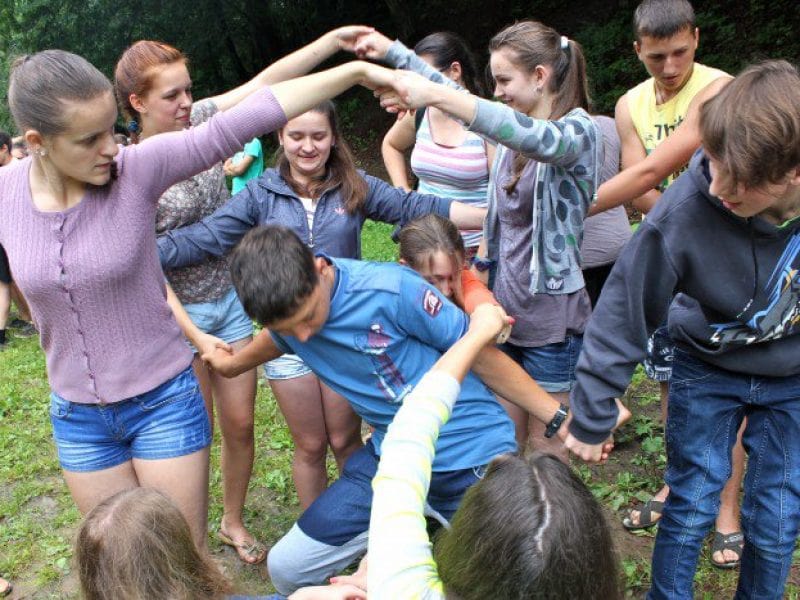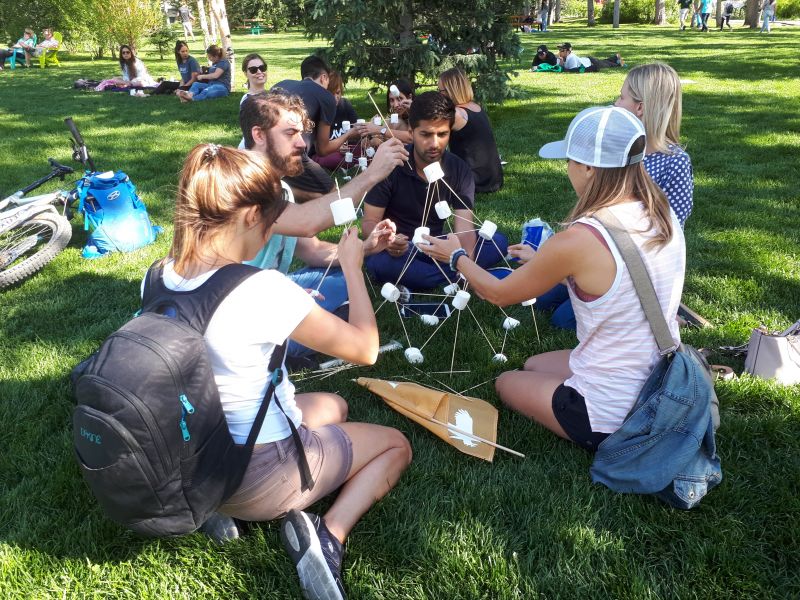
Depending on the company you work for, mentioning team building will make you run for it – or run away from it.
Organizing team activities is an art in itself, and a very difficult one to master. When done right, it boosts morale and fosters relationships between team members, but when handled wrong, it can become a nightmare.
But before we talk about all this, let’s start with some basics…
What is a teambuilding activity?
A teambuilding activity is an event designed to strengthen relationships and define roles among the members of a given organization. People recommend them because these occasions offer a break from the daily routine and allow co-workers to interact with each other in an informal and relaxed atmosphere.
Some of the objectives of these activities are the following:
- Improve productivity
- Increase motivation
- Encouraging problem solving
- Enhancing creativity
- Improving communication
- Keeping employees motivated
- Develop problem-solving skills
Moral building VS Teambuilding
The first ones are designed to make people happy. These activities include going out to dinner and staying late on Fridays to have a beer with your colleagues. While they can be fun, they don’t necessarily take people out of their comfort zone. Not to be misunderstood, a team building activity should also be fun, but if it’s not a challenge, then it will never fulfill its purpose.
Remember, morale is for happiness and the team is for productivity. This all sounds great, but what about who is in charge of finding talent? Leaders and managers should be interested in organizing these types of outings because they make workers feel appreciated, which in turn increases their loyalty and a loyal employee will not only go the extra mile, but will also keep their job for a long time.
How to organize a team building activity?
Team building activities can go quite wrong if they are not planned enough. In order not to make the head of the marketing department and the content manager kill each other in paintball, it is important to consider the what, who and why of that output.
Before the activity
Choose something that most people will like
It’s impossible for everyone to like you, but at least choose an activity that most people will like. Or at least try to create a balance. If you’re going out for a high-stakes sport, maybe next time you could choose something a little less interactive for those who want to exercise their minds.

Consider the ultimate goal
What do you want to achieve? Do you want to improve communication between departments? Or do you simply want to instil a sense of pride in the company? The final objective will influence the selection of the activity.
Plan during working hours
No one wants to miss an opportunity or keep a potential client waiting, but office activities should be planned during working hours, otherwise some of your colleagues might be upset that you have taken up their free time. Time that could be used to be with family or stay home quietly.
If operations cannot be abandoned entirely, consider splitting up the team. One part will join the exercise while the other part stays on. Then, the teams take turns.
Getting people out of the office
Every time we enter the office, we go into “work mode”. Moving away from phones, whiteboards and computer screens, gets people completely focused on the activity and much more involved.
During the activity
Establish clear tasks and objectives
Just because it is an activity that takes place outside the workplace does not mean that there should not be a clear purpose, even if that purpose is “to have fun. Make sure everyone on the team knows what they are.
Allow everyone to express their opinion
Even if they’re at the lowest post. This can be done by giving them a turn at some activity or by giving them a checkpoint during the activity.
Establish rules together
It encourages participation when it comes to setting rules and limits. People are more accountable when they break the rules they helped create.
Don’t forget that you are still the leader
Apart from the obvious, ‘how to get there’ and ‘what to eat’, a teambuilding manager’s role should be to keep track of everything. Studying your team members and taking notes on their behavior, what they do or don’t do, should give you an idea of what can be applied to the daily corporate routine.
Take it easy
You may still be the manager, but the main goal of the tour is to have a different day. If you take it too seriously, the fun will be lost and no one will enjoy it, making it an activity of the whole bunch.
After the activity
Question you thought
Your co-workers will give you a different perspective on how the outing went. These opinions will give you valuable information that you can use in your next idea. Perhaps the goals need to be changed, or your co-workers may prefer another type of plan.
